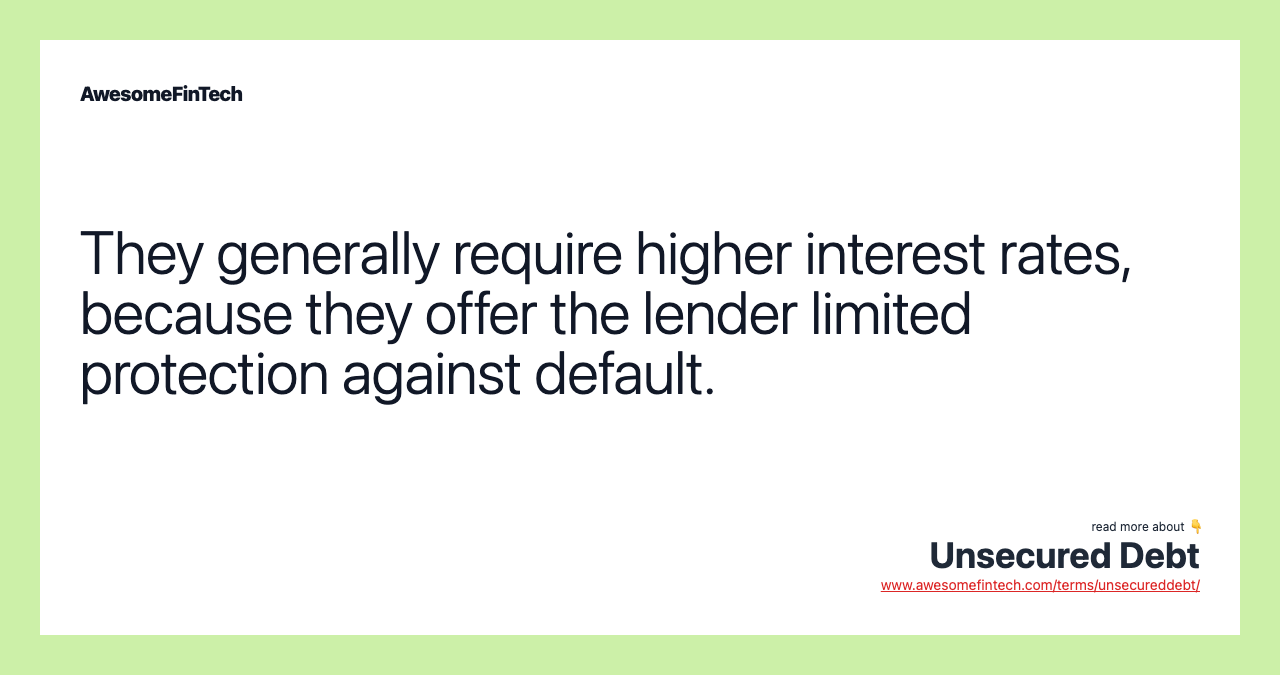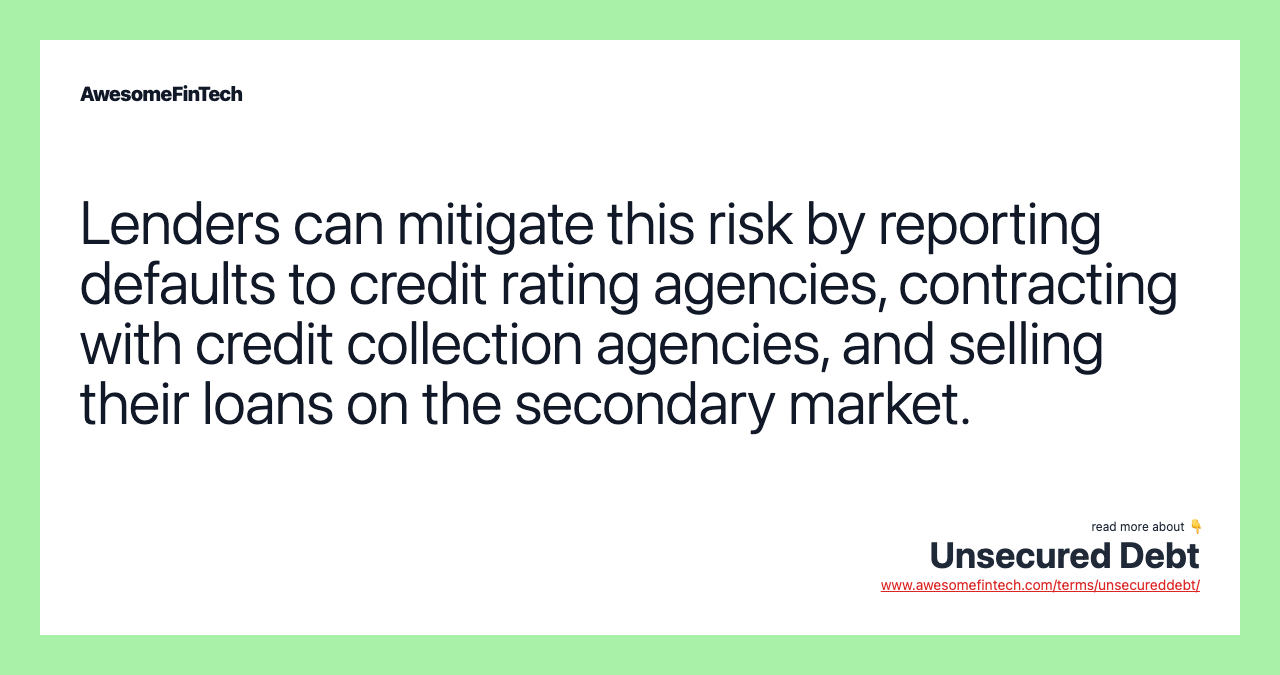Unsecured Debt
Unsecured debt refers to loans that are not backed by collateral. If the borrower defaults on the loan, the lender may not be able to recover their investment because the borrower is not required to pledge any specific assets as security for the loan. Because unsecured loans are considered more risky for the lender, they generally carry higher interest rates than collateralized loans. Because unsecured loans are considered riskier for the lender, they generally carry higher interest rates than collateralized loans. Lenders can mitigate this risk by reporting defaults to credit rating agencies, contracting with credit collection agencies, and selling their loans on the secondary market.

What Is Unsecured Debt?
Unsecured debt refers to loans that are not backed by collateral. If the borrower defaults on the loan, the lender may not be able to recover their investment because the borrower is not required to pledge any specific assets as security for the loan.
Because unsecured loans are considered riskier for the lender, they generally carry higher interest rates than collateralized loans.



Understanding Unsecured Debt
A loan is unsecured if it is not backed by any underlying assets. Examples of unsecured debt include credit cards, medical bills, utility bills, and other instances in which credit was given without any collateral requirement.
Unsecured loans are particularly risky for lenders because the borrower might choose to default on the loan through bankruptcy. In this situation, the lender can seek to sue the borrower for repayment of the loan. However, if no specific assets were pledged as collateral, the lender may be unable to recover their initial investment.
Because unsecured loans are considered more risky for the lender, they generally carry higher interest rates than collateralized loans.
Although bankruptcy can allow borrowers to avoid repaying their debts, it is not without its consequences. Borrowers who have declared bankruptcy in the past may find it difficult or impossible to secure new loans in the future, since the bankruptcy will have a severe negative impact on their credit score, likely for many years to come.
Lenders, meanwhile, may seek alternative methods for recovering their investment. In addition to suing the borrower, lenders can also report any instances of default or delinquency to a credit rating agency. Alternatively, the lender can also hire a credit collection agency that will then seek to collect the unpaid debt.
Real-World Example of Unsecured Debt
Max is a private lender specializing in unsecured loans. He is approached by a new borrower, Elysse, who wishes to borrow $20,000.
Because the loan is unsecured, Elysse is not required to pledge any specific assets as collateral in case she defaults on the loan. As compensation for this risk, Max charges her an interest rate that is higher than rates associated with collateralized loans.
Six months later, the loan becomes delinquent due to a series of late and missed payments by Elysse. Max has several options to consider:
Although Max could seek to sue Elysse for repayment of the loan, he suspects this would not be worthwhile because there are no specific assets pledged as collateral. As an alternative, he chooses to hire a collection agency to pursue repayment of the loan on his behalf. As compensation for this service, Max agrees to pay the collection agency a percentage of any amount that the collection agency succeeds in recovering. Collection agencies charge on a contingency fee basis. Collection rates vary by collection type, size, and age. They average between 7.5% and 50% for each account, with consumer rates typically around 35%.
Another option: Max could have sold the debt to another investor using the secondary market. In that scenario, he would have likely sold the debt at a considerable discount to its face value. In exchange for the discounted purchase price, the new investor would assume the risk of not being repaid.
Related terms:
Bankruptcy
Bankruptcy is a legal proceeding for people or businesses that are unable to repay their outstanding debts. read more
Collateral , Types, & Examples
Collateral is an asset that a lender accepts as security for extending a loan. If the borrower defaults, then the lender may seize the collateral. read more
Collection Agency
A collection agency is a company used by lenders to recover funds that are past due or from accounts that are in default. read more
Consumer Debt
Consumer debt consists of personal debts that are owed as a result of purchasing goods that are used for individual or household consumption. read more
Credit Card Debt
Credit card debt is a type of unsecured liability that is incurred through revolving credit card loans. It greatly affects your credit score. read more
Credit Score: , Factors, & Improving It
A credit score is a number between 300–850 that depicts a consumer's creditworthiness. The higher the score, the better a borrower looks to potential lenders. read more
Credit Card
Issued by a financial company giving the holder an option to borrow funds, credit cards charge interest and are primarily used for short-term financing. read more
Debt Relief
Debt relief refers to strategies whereby debtors are able to lessen the burden of their obligations to a creditor. read more
Debt Consolidation
Debt consolidation is the act of combining several loans or liabilities into one by taking out a new loan to pay off the debts. read more